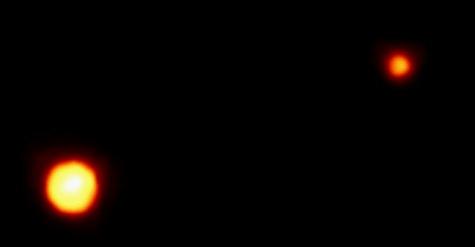


 | |
| Courtesy STScI. |
We do not understand much about Pluto partly because it is very far away from us and partly because Pluto is the only major planet that has not been visited by an spacecraft. (In contrast, spacecraft have flew by comets and asteroids.)
Pluto is the smallest major planet in our solar system. Its mass is less than 1% of the Earth, and its diameter is about 2300km. Its density is roughly 2.3 times that of water. Usually, the Jovian planets have density less than 2, while terrestrial planets have density more than 5.
The orbit of Pluto is special. It is inclined 17.2° to the ecliptic. Moreover, part of its orbit lies inside Neptune's. As a result, the most distant planet in our solar system was Neptune from 1979 to 1999.
Pluto's surface and its weak atmosphere are made up of nitrogen. From its density, we know that it is rocky.
Pluto has a satellite called Charon. Its diameter is about 1200km,
which is relatively very large, over one
half of Pluto's. Moreover, the time for Charon to go around Pluto
is the same as the rotational period of Pluto. Therefore,
Charon is a synchronous satellite. In other words, you will never see
Charon on one half of the surface of Pluto, but you will always see it at a
fixed position on the sky on the remaining half of Pluto. Last but not
least, it is the only natural synchronous satellite in our
solar system.
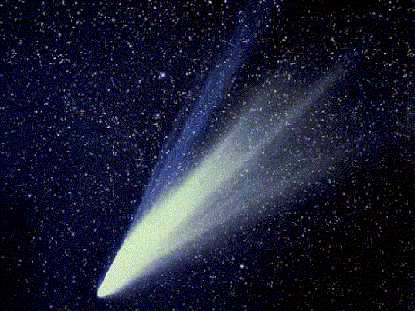 | |
| Courtesy NASA. |
Comets are usually modeled as ``dirty snowballs''. A comet consists
of a tiny nucleus with diameter less than 10km. The nucleus is made up of
frozen gases and dust. When it approaches the Sun, some
gases will be vaporized and an extended coma will then be produced.
When it moves even closer to the Sun, the solar wind (charged particles
ejected from the Sun) and the Sun's radiation pressure
(See Chapter 11.) push the dust
and gases of the comets away, this will result in a beautiful
long tail. From this, we know why the comet tail is always pointing
away from the Sun.
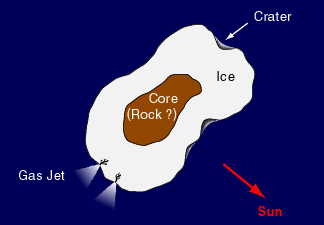
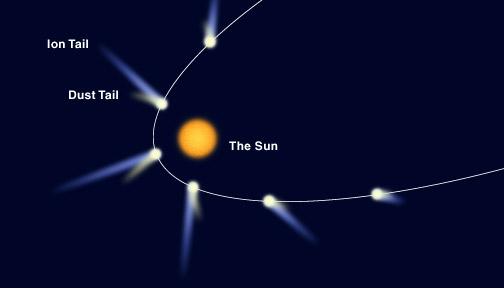
Orbits of a comet may be open or close. A comet with an open orbit will only visit the Sun once. However, a comet with a closed orbit (actually it is elliptical) will visit the Sun again and again. Perhaps, the most famous one is the Comet Halley, it has a closed orbit with a period of 76 years.
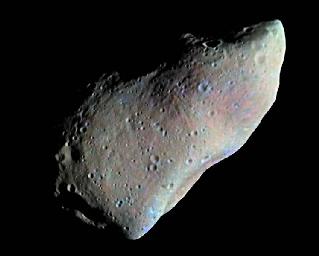 |
| Courtesy JPL/NASA. |
This one is the asteroid Ida. Note its little moon (satellite), Dactyl, at the right.
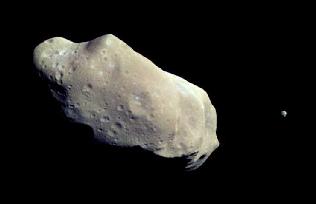 |
| Courtesy JPL/NASA. |
When we take long exposure photos, asteroid may show up as a long trail. In fact, most of the asteroids are discovered in this way.
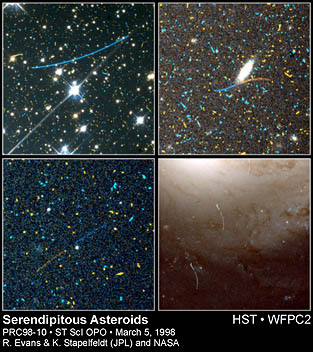 |
| Courtesy STScI. |
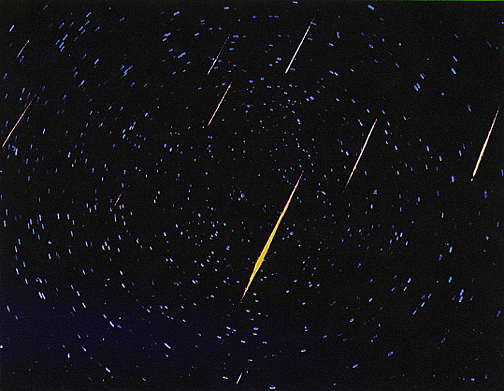 | |
| Courtesy NASA. |
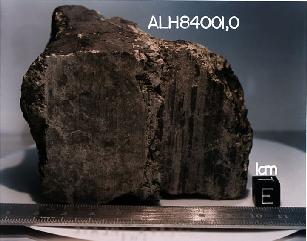 |
| Courtesy NASA. |
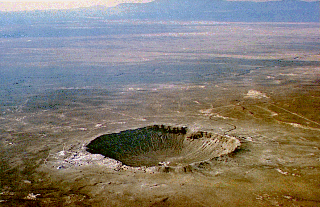 |
| Courtesy NASA and D. Roddy of the US Geological Survey. |